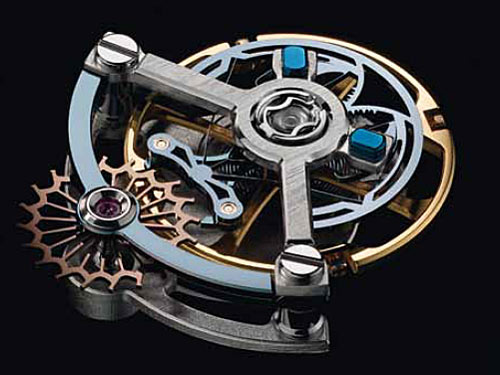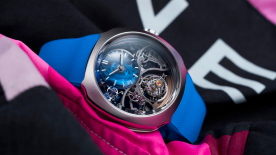The escapement is the organ that performs the fundamental measurement of time inside a movement. It is the place where energy becomes information. In this respect, it may be regarded as a mechanical processor. In recent years, innovations on the regulating organ had tended to concentrated on one particular area, as silicon made a noteworthy entrance into watches’ very heart. Although this material does indeed represent a minirevolution, it takes the place of other materials within escapements, and the latter are almost exclusively of the Swiss-lever type. There has however been a recent shift in this focus.
Horological history has been largely written in terms of the progress made on this part of the movement. The lever escapement established itself along with the wristwatch, as the bulkier and more energy-hungry and detent and pin-pallet types with their respective variations gradually disappeared along with the pocket watch. It was not until 1990s, when Omega acquired the patents for the co-axial escapement invented by Georges Daniel, that a new system made a front-stage appearance – and even then, the co-axial is merely an incremental improvement of the Swiss lever escapement, that Omega has since begun to use in a number of its models.
Then in 2011, Urban Jürgensen announced that it has succeeded in miniaturizing the detent escapement. This is no mean feat, since this type is reputed to be both fragile and capricious. On a similar note, Christophe Claret presented the Maestoso at Baselworld 2014, equipped with a fully operational detent escapement of which several have already been made, including several acquired by Bulgari for its Ammiraglio Del Tempo. This strange system conceals its mode of operation, since the balance oscillates, the seconds hand moves on, but the detent itself makes such tiny and quick jumps that one cannot help wondering whether it is actually working.

A shared quest
Interest in detent escapements goes back a long way, since it used to be known as the “chronometer escapement”. This was the type equipping marine timepieces that used to be of such vital use to sailors in maritime navigation. There is another type of historical escapement, the so-called échappement naturel that dates back to a concept invented by Abraham-Louis Breguet. Since 2011, four brands have presented their own version. Those by F.P. Journe, Laurent Ferrier and Kari Voutilainen use comparable principles, while the fourth and typically standout variation stems from Ulysse Nardin. To emphasize its resolutely vanguard approach, the latter now also offers its third innovative in-house escapement, a variation on the lever escapement, made of silicon like its recent predecessors. It belongs to the new family of systems distinguished by their geometry and their sophistication – the most famous being Girard-Perregaux’s Constant Escapement. Its highly complex butterfly shape stems precisely from its constant-force nature expressed in the name. It is also the only concept that regulates both the rhythm of the oscillations and the force transmitted to the balance – a guarantee of precision timekeeping.
While undoubtedly both difficult and costly, research in the domain of escapements is also a ticket to glory when it yields results. Nonetheless, with the notably exception of Omega, it remains the preserve of small and medium-sized brands that remain dedicated to faithfully perpetuating this noble heritage.












